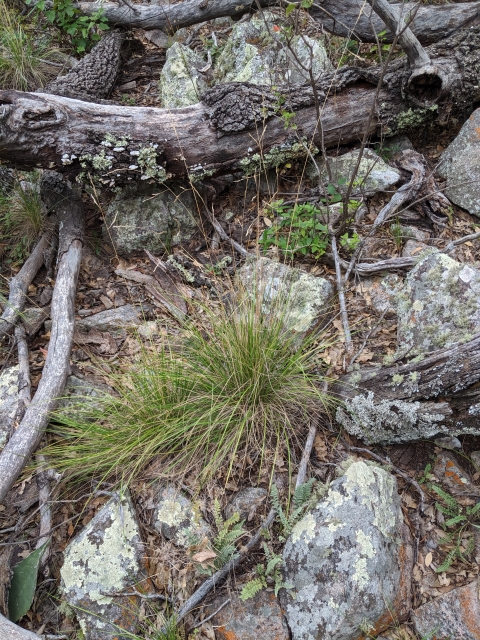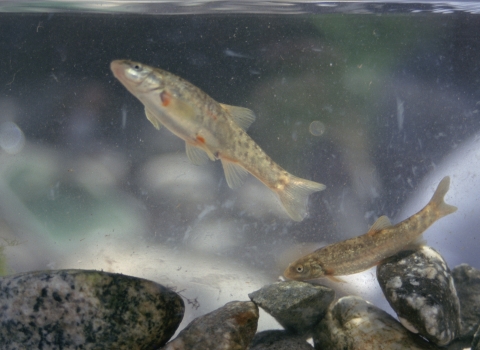The U.S. Fish and Wildlife Service is announcing the availability of the final recovery plan for Guadalupe fescue (Festuca ligulata), a grass listed as endangered under the Endangered Species Act (ESA). The final recovery plan includes specific criteria for determining when Guadalupe fescue should be considered for downlisting and for delisting from the Federal List of Endangered and Threatened Wildlife and lists site-specific actions that will be necessary to meet those criteria.
Guadalupe fescue is a grass species known only in a few high mountain ranges of the Chihuahuan desert in Trans-Pecos Texas and Coahuila, Mexico. Although historically it has been found at eight sites, only four existing populations are currently known: one at Big Bend National Park, Texas, two in the Maderas del Carmen Area de Protección de Flora y Fauna in Coahuila, and one at Ejido El Fraile in Coahuila.
When the grass was listed as endangered on September 7, 2017, there were fewer than several hundred individual plants left in the existing known population locations. The most important factors that may affect the continued survival of Guadalupe fescue include changes in the wildfire cycle and vegetation structure structure
Something temporarily or permanently constructed, built, or placed; and constructed of natural or manufactured parts including, but not limited to, a building, shed, cabin, porch, bridge, walkway, stair steps, sign, landing, platform, dock, rack, fence, telecommunication device, antennae, fish cleaning table, satellite dish/mount, or well head.
Learn more about structure , competition from invasive species invasive species
An invasive species is any plant or animal that has spread or been introduced into a new area where they are, or could, cause harm to the environment, economy, or human, animal, or plant health. Their unwelcome presence can destroy ecosystems and cost millions of dollars.
Learn more about invasive species , and the demographic and genetic consequences of small population sizes, low population densities, and the isolation of extant populations.
In order to promote and support the conservation and survival of endangered species and threatened species, and provide a transparent path to achieving recovery, the Service and its partners develop and implement recovery plans.
Recovery plans are unique to each species and serve as central organizing tools that provide important guidance on methods of minimizing threats to listed species, such as restoring and acquiring habitat, removing introduced predators or invasive species, conducting surveys, monitoring individual populations, and breeding species in captivity and releasing them into their historical range.
Recovery plans are guidance and not regulatory documents, and no agency or entity is required by the ESA to implement actions in a recovery plan.
Since the time of listing, the Service has been working with partners, including Big Bend National Park, to implement beneficial recovery actions for the plant and minimize threats, which includes reducing impacts from park visitors and pack animals on more than 7,000 acres designated as critical habitat in the park. These partners were consulted in the development of the recovery plan and the ongoing conservation actions are now reflected in the final recovery plan.
Recovery for Guadalupe fescue will be accomplished through the amelioration of threats to the species and the conservation of resilient, redundant, genetically diverse populations that represent the full range of the species’ ecological adaptations to the sky island habitats of the Chihuahuan Desert in Texas and Mexico.
The final recovery plan for the Guadalupe fescue can be found at the following website: https://ecos.fws.gov/ecp/species/8068.




